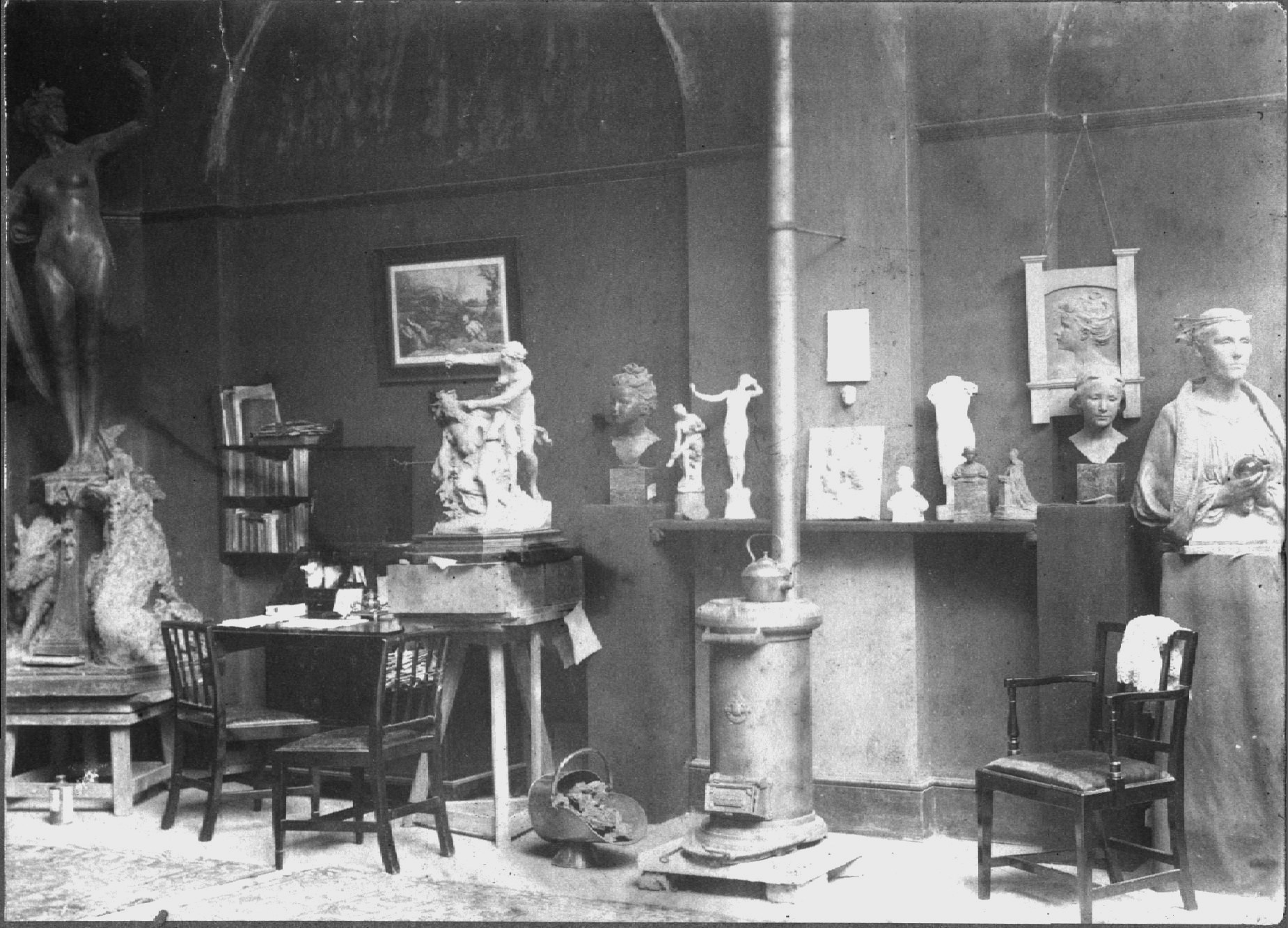ALFRED DRURY AND THE NEW SCULPTURE

Studio 3 Gallery, School of Arts, University of Kent:
30 September – 20 December 2013
The Stanley & Audrey Burton Gallery, University of Leeds:
15 January – 13 April 2014
Studio 3 Gallery is delighted to announce a major new exhibition dedicated to the art of one of the leading sculptors of the late Victorian and Edwardian period: Alfred Drury. The exhibition will show Drury’s most important sculptural works on a smaller scale – including his most characteristic masterpieces Griselda, The Age of Innocence and Lilith – thanks to generous loans from private collections. The exhibition, which will move on in the New Year to The Stanley & Audrey Burton Gallery in Leeds, is supported by grants from the Paul Mellon Centre for Studies in British Art, the Henry Moore Foundation and the Leeds Art Fund.
A fully illustrated catalogue with contributions by Benedict Read, Jolyon Drury, Brian Landy, Jane Winfrey and the exhibition curator Ben Thomas will be published to accompany the exhibition, and which presents new research on the artist. The catalogue is published thanks to the generosity of the Leeds Art Fund – Susan Beattie Memorial.
A display of drawings by Alfred Stevens – ‘England’s Michelangelo’ – from Drury’s collection will accompany this exhibition at The Beaney House of Art and Knowledge in Canterbury from 21 September to 1 December 2013:
A related exhibition on Alfred Drury is currently running at the Henry Moore Institute in Leeds until 20 October 2013, The Age of Innocence: Replicating the Ideal Portrait in the New Sculpture Movement:
http://www.henry-moore.org/hmi/exhibitions/the-age-of-innocence

The aim of the exhibition Alfred Drury and the New Sculpture is to review the art and life of Alfred Drury (1856-1944), the formative influences on his sculptural practice, and his role in the New Sculpture movement of the late Nineteenth and early Twentieth centuries. Drury is due a reappraisal. Recent writing on the New Sculpture has tended to follow the lead of Edmund Gosse’s influential articles in the Art Journal of 1894, which saw Frederick Leighton and George Frederic Watts as initiating a reform of British sculpture that reached its zenith in the work of Alfred Gilbert and William Hamo Thornycroft. Gosse barely mentioned Drury, dismissing him as ‘a mannered Kensington student, somewhat under the influence of Dalou’.
Arguably, however, Drury was one of the central figures in the New Sculpture movement because he combined in his art the realism of the great French sculptor Aimé-Jules Dalou (1838-1902), with whom he had a long professional relationship, and the Michelangelo-esque vision of Alfred Stevens (1818-75), whose art he revered and whose drawings he collected. Dalou and Stevens were seen as the key influences in the reform of British sculpture by a slightly later generation of critics to Gosse, including Marion H. Spielmann and Kineton Parkes. Drury was recognised by Spielmann as ‘one of the most distinguished’ of the group of British artists taught by the exiled communard Dalou, and according to Parkes, Drury’s ‘adherence to Stevens has never wavered’ so that ‘in his work he is a direct descendant of the great sculptor-painter-designer, and is therefore in the direct line of English sculptural development’. The neglect of Drury’s art may also have been partly due to its languorous beauty, eschewing muscular heroics and decorative excesses. By contrast with Leighton and Thornycroft, Drury ‘cares little for vigour, passion or anatomical display’, argued Spielmann, but instead ‘seeks the graceful, the placid, and the harmonious’.
Alongside sculptural works by Alfred Drury, the exhibition will display paintings and medals by the artist, and also documents and photographs from the period. The exhibition will also include works by Aimé Jules Dalou, Auguste Rodin, Lord Leighton, and Alfred Stevens.

